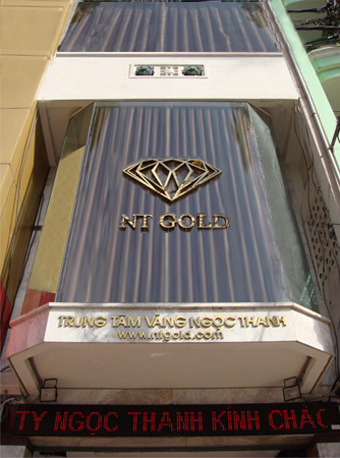Bank of America Corp., Credit Agricole CIB and Haitong Securities Co. estimate the surplus (CNFRBAL$) this year will slip below $102 billion. For December, the excess shrank to $9.45 billion, according to the median of 18 estimates in a Bloomberg News survey, indicating an annual surplus of $147.9 billion.
The latest monthly figures are due tomorrow, before the arrival in Beijing of U.S. Treasury Secretary Timothy F. Geithner, who said last year that China’s yuan hadn’t risen fast enough. With a prolonged crisis in Europe, the biggest Chinese trading partner, Premier Wen Jiabaomay have little appetite to accommodate Geithner’s request, analysts said.
“The dollar-yuan exchange rate could be quite close to the equilibrium value and the room for further rapid yuan appreciation is limited” given a shrinking trade surplus, said Lu Ting, an economist at Bank of America in Hong Kong. “As China comes close to a balance of trade, political pressures from the U.S. will have to cool eventually.”
The yuan declined 0.25 percent last week to close at 6.3095 per dollar in Shanghai, after surpassing 6.3 for the first time in 18 years last month. It will gain 2.4 percent to 6.14 yuan per dollar by the end of this year, compared with a 4.7 percent increase last year, according to the median estimate of 28 analysts in a Bloomberg News survey.
A diminishing surplus may damp liquidity growth, giving China’s central bank more scope to cut banks’ required reserve ratio. Barclays Capital and Bank of America Merrill Lynch say the reserve requirement may be lowered before a weeklong Chinese New Year holiday starts on Jan. 23.
China’s December lending and money supply growth exceeded economists’ estimates, signaling monetary conditions may be easing, data showed yesterday. New loans totaled 640.5 billion yuan ($101 billion) for the month, exceeding the estimates of all 18 economists surveyed by Bloomberg. M2, a measure of money supply, rose 13.6 percent, compared with the 12.9 percent median of 18 estimates.
China’s central bank cut the reserve ratio for the first time in almost three years in December to encourage lending. Expectations for more monetary easing escalated after inflation cooled to the slowest pace in 14 months in November and industrial output growth weakened.
Economic growth may slow to 8.5 percent this year, down from 9.2 percent in 2011, according to the median estimate of economists in a Bloomberg News survey.
Reserves Moderate
China’s exchange-rate management has seen it accumulate the world’s largest currency reserves, with holdings at $3.2 trillion as of September. As the trade surplus fell and inflows of overseas capital diminished, gains in the reserves moderated. Quarterly growth slowed for four straight quarters through September, according to data compiled by Bloomberg.
“With the gradual stabilization of foreign-exchange reserves and close to zero current-account surpluses, China will have more arguments to oppose Washington’s demand on currency appreciation,” said Herve Lievore, an economist for Asia at AXA Investment Managers in Hong Kong.
China’s import growth outpaced that of exports every month since May as Europe’s turmoil hit. Estimates for December signal a 19 percent drop in the trade surplus last year from 2010. Commerce Minister Chen Deming said Jan. 5 the excess probably dipped 13 percent to $160 billion, or 2 percent of gross domestic product.
Geithner Trip
The U.S. Treasury said last month it will seek further gains in the yuan and called the currency undervalued, while declining to brand China a manipulator of its exchange rate. Geithner’s visit this week is part of a trip that also features a stop in Tokyo, with talks scheduled to include discussions on sanctions on Iran for its nuclear development plans.
Hu Yifan, chief economist at Haitong in Hong Kong, who previously worked at the World Bank, sees the annual trade surplus in a range of $70 billion to $100 billion. Credit Agricole’s Dariusz Kowalczyk predicts the excess at $60 billion. China’s merchandise surplus as a share of GDP rose to a record of 7.5 percent in 2007, when the surplus hit $262.2 billion.
Zero in 2015
“Given the European debt crisis and sharp slowdown of the European economy, China’s decline in its trade surplus will likely be faster than expected,” said Ma Jun, an economist at Deutsche Bank AG, who rated as top China analyst and Asia economist by Institutional Investor magazine’s 2011 poll. Ma said the surplus may shrink to zero by 2015.
A shrinking labor force and rapid aging of the population in a nation of 1.3 billion people will also reduce China’s surplus, Ma said. Such demographic changes will account for about 60 percent of the drop in the excess in the coming decade, Ma said in his 2011 book “Locus of Money,” based on the assumption that yuan will rise 3 percent annually against the dollar.
Not all economists are predicting a shift to balanced trade. BNP Paribas SA senior China economist Ken Peng, the most accurate forecaster of Chinese economic data in Bloomberg News surveys in 2011, said “China would still have a structural trade surplus, just because of the amount of migrant people employed in the exports industry.”
To contact the reporter on this story: Sophie Leung in Hong Kong at sleung59@bloomberg.net
To contact the editor responsible for this story: Paul Panckhurst at ppanckhurst@bloomberg.net
| TIME | |||||
|---|---|---|---|---|---|
| Sydney | Tokyo | Ha Noi | HongKong | LonDon | NewYork |
| Prices By NTGOLD | ||
|---|---|---|
| We Sell | We Buy | |
| 37.5g ABC Luong Bar | ||
| 8,295.60 | 7,585.60 | |
| 1oz ABC Bullion Cast Bar | ||
| 6,945.00 | 6,255.00 | |
| 100g ABC Bullion Bar | ||
| 22,031.40 | 19,931.40 | |
| 1kg ABC Bullion Silver | ||
| 4,128.40 | 3,128.40 | |
Powered by: Ngoc Thanh NTGold
- Online: 157
- Today: 6375
- Total: 6696631














